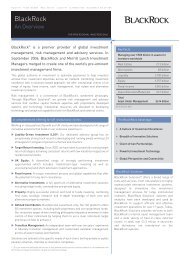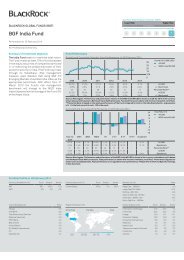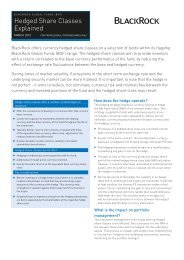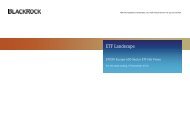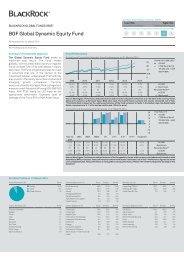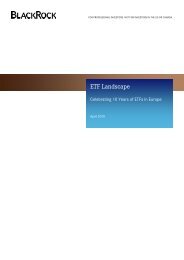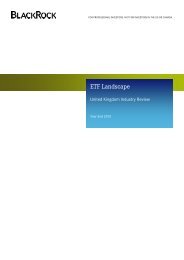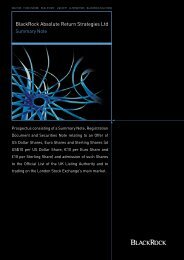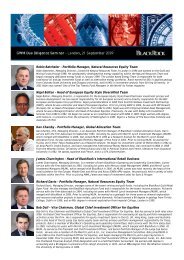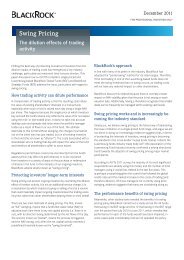Outlook for Global Wholesale and Investment Banking - BlackRock ...
Outlook for Global Wholesale and Investment Banking - BlackRock ...
Outlook for Global Wholesale and Investment Banking - BlackRock ...
Create successful ePaper yourself
Turn your PDF publications into a flip-book with our unique Google optimized e-Paper software.
March 16, 2010Banks7) Sustainable Industry Returns? Regulatory impact meansmanagement will have to act decisively to rebuild returnsDespite heavy marks, industry returns in 2009 were ~14% –below the 18% average of 2002-06, but not far off the 15.5%average in 1987-99. Given the likely tightening of regulation,maintaining 15%+ returns will depend more than ever onstrategic positioning of the business portfolio, consciousadjustment to compensation to offset higher capital <strong>and</strong>funding costs, <strong>and</strong> outst<strong>and</strong>ing management execution toimprove revenue on assets.The range of possible outcomes by 2012 is clearly wide, giventhe flux in regulatory debate <strong>and</strong> uncertainty on underlyingWestern economic growth as policy response is withdrawn.We have taken a scenario-based approach, <strong>and</strong> highlight fivepotential outcomes <strong>for</strong> returns in 2012, of which we see threeas plausible, framing returns in the 12% to 16% range.Our base case assumes industry level returns of ~15%.We estimate that this would require a stabilization of theunderlying compensation as a proportion of revenues at 2009levels (equivalent to absolute compensation levels flat toslightly down), which we see as achievable without unduly<strong>for</strong>cing material additional talent migration to the lessregulated sector. It would also require a shift in the businessmodel (see below) that improves revenue/assets by ~20%from today. Again, we think this is achievable, although itwould probably require very proactive management, withmargins maintained at (or close to) current levels to offset theregulatory impact.The severity of regulatory response will probably be tiedto macro conditions. In looking at other scenarios, we haveassumed a strong correlation between the severity ofregulatory response <strong>and</strong> underlying state of the economy. Forthis reason, of the five combinations of these two factorsoutlined in Exhibit 26, we see only two as plausiblealternatives to our base case.caps on industry leverage to reduce gearing to growth tobelow historical levels, effectively bounding returns below17%, on average.‘Regulatory Fragmentation’ scenario. We see the mostlikely ‘Incremental Change’ scenario <strong>for</strong> the industry asone of G10 stagnation on growth <strong>and</strong> dissipatingregulatory cohesion <strong>and</strong> conviction. As this is a low growthenvironment, despite a lesser regulatory drag, we wouldstill expect returns to be around ~14%.Exhibit 23Reported ROE <strong>for</strong> major investment banks40%30%20%10 %0%'93'94-10%-20%-30%//-40%-100%'95'96'97'98'99'00'01'02'03'04'05'06'07'08'09Cycle ‘93-’99Avg RoE = 15.4%MaximumMedianMinimumCycle ‘00-’06Avg RoE = 17.5%Source: Annual reports, Oliver Wyman, Morgan Stanley Research; Sample includes Citi, CS,DBK (CIB Only, 2006-1998), GS (2008-1999), JPM (I-Bank Only 2008-2003), LEH, ML (CIBOnly), MS(2008-1997), BSC, UBS‘Punish the Banks’ scenario. A draconian regulatoryoutcome would require dramatic industry shrinkage <strong>and</strong>would require margins to rise 50-150% from today’s levelsto have any hope of rebuilding returns to north of 11%. Wenote, however, that in this dramatically lower riskenvironment, sub-15% returns may be acceptable toinvestors. In a robust growth outcome combined withstrong regulation (a plausible combination, we believe, aspolicy makers are to some extent setting the parameters<strong>for</strong> regulation based on economic health) we would expect23



